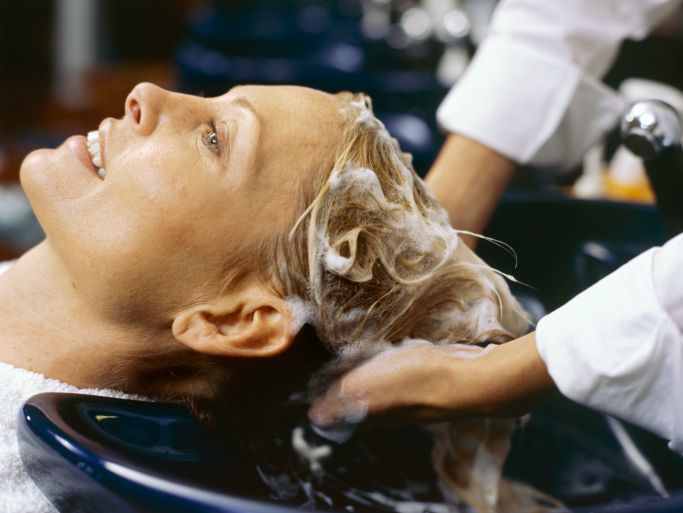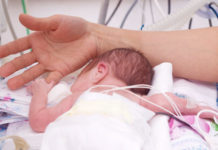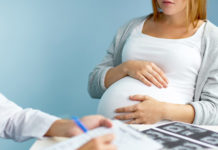Is it safe to dye my hair while I’m pregnant?
The number of natural and synthetic chemicals that we are exposed to has increased dramatically over the past 70 years, and hair dyes are just one of the products which contain potentially harmful chemicals, some of which can cross the placenta during pregnancy. Unlike the medicines we purchase, we cannot assume that hair dyes and other environmental chemicals have been adequately tested by regulatory bodies to ensure their safety.
Due to safety concerns about hair dyes, the 1970s saw an intensive safety evaluation and the removal or modification of many ingredients in hair dyes. While hair dye is safer in the 21st century than it was in the 1970s, some of the ingredients in hair dyes may pose a risk to a developing foetus.
How the chemicals in hair dye affect a developing baby?
 When a woman is pregnant, many of the substances in her body (both good and bad) enter her baby’s circulation. They do this by crossing the placenta. The placenta is an organ which attaches to the umbilical cord and is only present in the woman’s body during pregnancy. It functions to transfer nutrients and oxygen to, and remove waste products from the foetus.
When a woman is pregnant, many of the substances in her body (both good and bad) enter her baby’s circulation. They do this by crossing the placenta. The placenta is an organ which attaches to the umbilical cord and is only present in the woman’s body during pregnancy. It functions to transfer nutrients and oxygen to, and remove waste products from the foetus.
The placenta includes barrier membranes which separate the mother’s blood from the baby’s and also prevent some substances passing from the mother’s blood circulation to the baby’s. However, the placental membrane blocks substances from entering the foetal circulation based on their size, not based on their level of toxicity. This means that harmful substances in the mother’s body can still pass into the body of her unborn baby despite the barrier membranes which are there to protect it.
What are the adverse health effects of hair dye on a developing baby?
Scientific studies about the effects of hair dye on foetal growth and development are largely lacking. There is limited information about the effects of hair dyes to the unborn child. However scientists have shown that when some of the chemicals in hair dyes come into contact with your skin a small amount (up to 0.5%) can be absorbed. Ammonia, an ingredient in some hair dyes can enter the mother’s system when it is inhaled and dyes containing ammonia should be avoided. Scientists have not yet determined if hair dye chemicals absorbed during pregnancy are able to cross the placenta and enter the body of the developing foetus.
However, studies have shown that the risk of certain health conditions is greater in babies born to mother who used hair dyes during or immediately before pregnancy, compared to babies born to mothers who didn’t. Some of the conditions that have been associated with the use of hair dyes in the month preceding or during pregnancy include:
- Congenital cataract – cataracts on the eyes present at birth; and
- Neuroblastoma – a rare form of childhood cancer in which a tumour grows on the nerve cells. This is the most common cancer to occur in the first year of life.
 The association between hair dye use and the development of neuroblastoma was higher with the use of temporary/semi permanent hair dyes compared to permanent hair dyes. This is possibly related to increased levels of absorption through the skin compared to permanent dyes and also because these hair dyes are more likely to be applied by women rather than a hairdresser.
The association between hair dye use and the development of neuroblastoma was higher with the use of temporary/semi permanent hair dyes compared to permanent hair dyes. This is possibly related to increased levels of absorption through the skin compared to permanent dyes and also because these hair dyes are more likely to be applied by women rather than a hairdresser.
However, many of these studies have their own limitations including that the studies:
- Were conducted using animals instead of humans to test the effects of hair dye;
- Used doses much higher than would be expected from typical human, and because the dose was higher, the risk of toxicity and harm to the baby were higher than with everyday use; and/or
- Used retrospective data, that is they questioned women about their use of hair dye some time following the pregnancy which may have caused errors relating to their recall of how much and when they used hair dyes.
In general, a large number of health agencies consider the use of hair dyes in pregnancy as safe but caution their use in the first trimester (the period when the baby’s organs start developing) and issue guidelines to minimise any risk of toxicity and harm.
Kindly written and reviewed by Dr Allison Johns BSc (Hons) MBBS, Doctor, King Edward Memorial Hospital and Editorial Advisory Board Member of Parenthub and Virtual Medical Centre.
References
More information on hair treatments and hair dyes during pregnancy
 |
You need to take measures to protect yourself and your baby if using hair dyes or treatments while pregnant or breastfeeding. Make sure you can tick off all the points on our checklist to keep you and your little on as safe as possible. Hair treatments checklist. |
 |
For more information on hair dyes and hair treatments during your pregnancy see Hair treatments and hair dyes in pregnancy |



 (7 votes, average: 4.14 out of 5)
(7 votes, average: 4.14 out of 5) 






